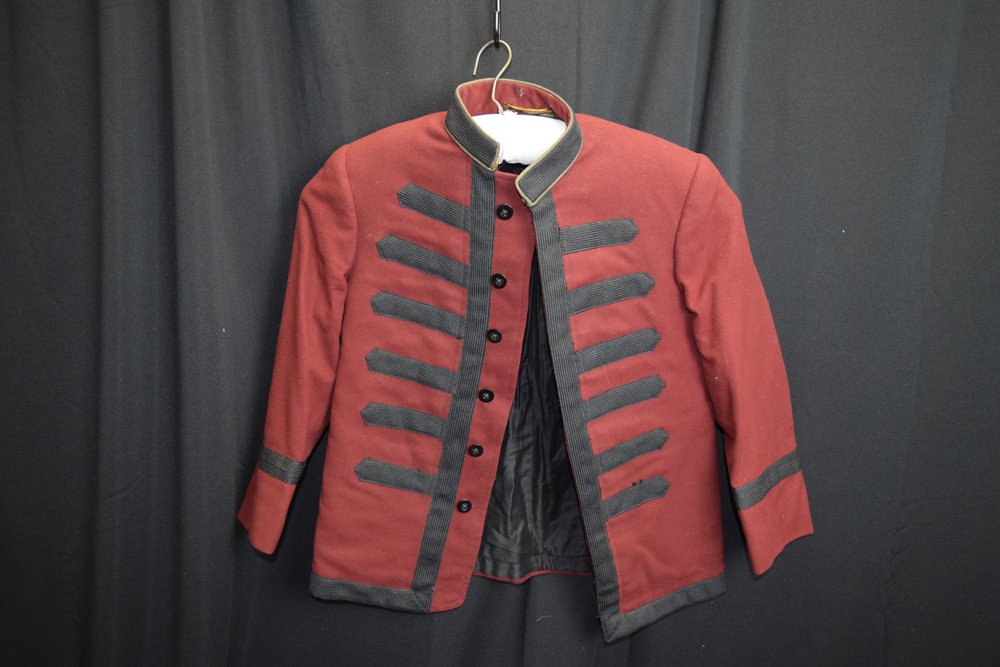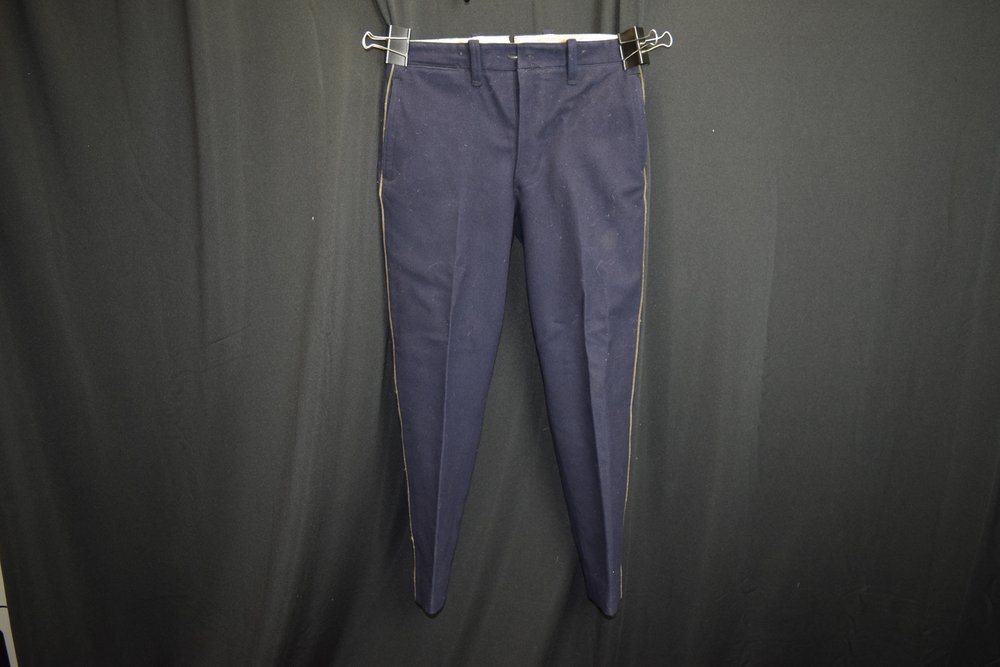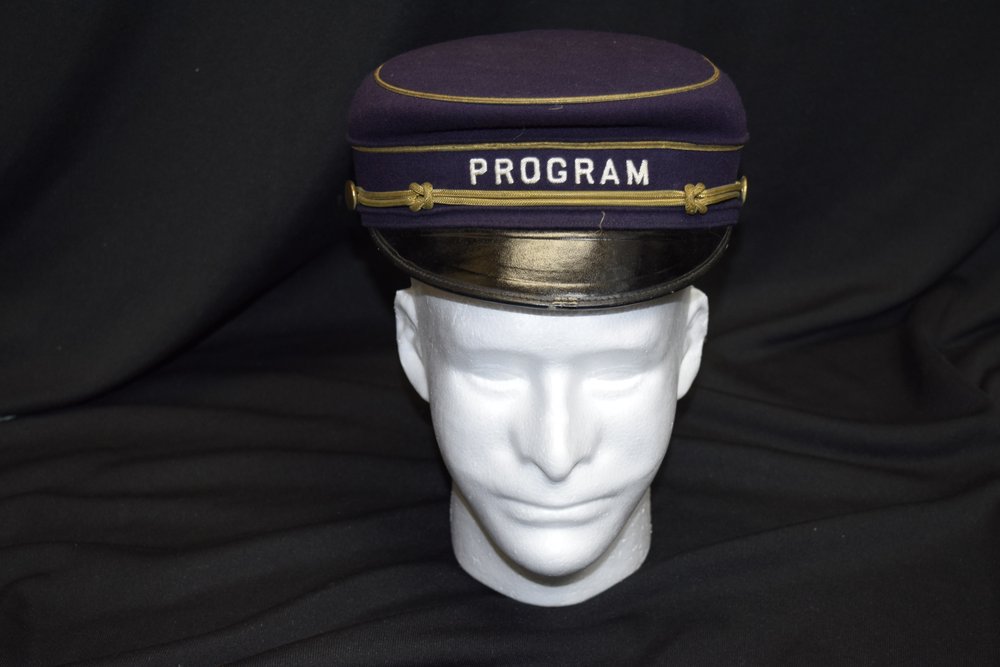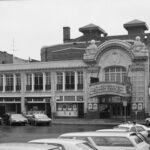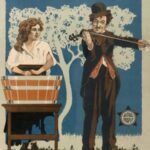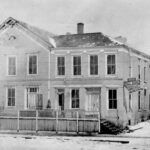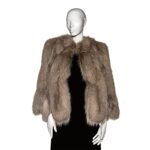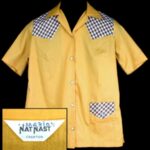On November 17, 1915, the Ringling Theatre opened in the city of Baraboo, Wisconsin; the newest movie palace in the area at a time, these venues were becoming increasingly popular throughout the United States. Movie palaces were a curated experience, where one would be led to their seat by an usher and greeted by live music that would play along with the film. While movie theaters today serve as a venue to watch movies, these early cinemas were even more so about the experience of visiting a movie palace and enjoying all of the high-end services that came with it. Ushers were an essential part of this curated atmosphere. They allowed for all patrons to feel like members of the upper class through the ushers’ use of honorifics of “sir” and “ma’am”. Evidence of this prestigious atmosphere can be found in the Ringling Theatre through the usher uniform pictured to the left.
This particular uniform was owned by Henry Ringling Junior, son of Henry Ringling and young nephew of Al Ringling, brothers of circus fame. The Ringling Brothers Circus, founded in 1884, became one of the most popular circuses in the country, and this success allowed Al Ringling to build the Ringling Theatre in Baraboo for the hefty price of $100,000. Al Ringling spared no expense when it came to creating his luxurious theatre, meaning many features of the building were either custom-made or top of the line. These expenses are unusual considering that Baraboo was a small town with a population of 1,376 people, so there was not a market for a theatre of this size. Additionally, despite the Ringling Brothers’ immense success, Al and his brothers did not have a robust history of philanthropic endeavors in Baraboo. In fact, the Ringling Brothers were not held in high regard locally at that time for many reasons, including the brothers’ history of constantly relocating to dodge taxes. It is possible that the theatre was built to get back within the good graces of Baraboo citizens.

Henry Ringling, Jr.’s uniform could corroborate this theory. Al Ringling purchased this uniform for his nephew on November 16, 1915 in preparation for the opening day of the theater. It is important to note that the purpose of this uniform is unclear, as it is not known for certain if Henry actually worked in the theater or if this was something fun for Henry to wear to performances. Born in 1906, Henry would have only been nine years old when this uniform was ordered, so it’s unknown if he was actually ever given any duties at the movie palace or if this was simply a replica uniform made for him to wear for fun.
Made by the same company that made the other usher’s uniforms, Henry’s consisted of a red usher coat with black details and gold piping around the collar, a pair of black trousers, and a navy felt cap with cold cord and the word “Program” embroidered in white thread. This embroidery would suggest that this was meant to be the outfit of a program boy, or one whose main duties were to stand in the lobby and distribute programs to guests. Whether Henry actually acted in this role, or if he just wore this outfit as a guest, dressing a member of the Ringling family in the same costume as the staff could have served to represent to the citizens of Baraboo that the Ringlings intended to serve the public.
One particularly interesting aspect of the uniform is that the coat had a black cloth lining with interior pockets. One of the most important roles of an usher was to lead people from the lobby to their seats which required them to be able to keep track of which seats were available and which were not. Ushers kept track of this using “spill sheets,” on which they would mark which seats were taken and which were open, and these hidden pockets would likely be a great place to store these sheets so that they could be referenced discreetly. In the pocket of Henry Ringling’s jacket, curators at the Sauk County Historical Society found a program for the film “Fighting Blood” and small ticket envelope on which Henry had scrawled his name. These bits of ephemera allowed the Historical Society to identify that the uniform belonged to Henry Ringling Jr., as well as link the uniform to a specific date when it was worn, as the playbill was printed in 1916.

Identifying this as Henry’s uniform, the Sauk County Historical Society was able to connect this object to the receipt for its purchase. This receipt notes that the uniform was purchased from the Henderson Ames Company of Kalamazoo, Michigan for twelve dollars, a large sum of money (an amount equal to over $200 today), especially for an usher’s uniform. Perhaps the high cost can be explained by the uniform having been custom-made for Henry, who was a young boy at the time. Along with the hefty price of uniforms, there is a hidden expense attached to the uniform as well as the cost of usher uniforms was often offset by the expectation that the uniforms would be passed down from usher to usher until they were no longer usable. This expectation was so common that movie palaces would sometimes only hire ushers who could fit into their available uniforms. The custom sizing for a nine-year-old boy suggests that this uniform was meant specifically for Henry and wasn’t otherwise in the theater’s uniform rotation.
Written by Hadley McSunas, July 2024.
Sources:
Jerry Apps, Ringlingville USA: The Stupendous Story of Seven Siblings and Their Stunning Circus Success. (Madison: University of Wisconsin Press, 2005).
Brian Leahy Doyle, Encore!: The Renaissance of Wisconsin Opera Houses. Places along the way Series. (Madison: Wisconsin Historical Society Press, 2009).
“Foremost Citizen of Baraboo Dies on First Day of the Year,” Baraboo Weekly News. (Baraboo, WI), Jan. 6 1916. https://www.loc.gov/item/sn86086068/1916-01-06/ed-1/. (Accessed April 9th 2023)
Douglas Gomery, Shared Pleasures: A History of Movie Presentation in the United States. (Madison: University of Wisconsin Press, 1992).
“New Al Ringling Theatre Opened,” Baraboo Weekly News. (Baraboo, WI), Nov. 25 1915. https://www.loc.gov/item/sn86086068/1915-11-25/ed-1/.
Sara Oostdik, “What’s in the Pocket?” Sauk County Historical Society. Accessed April 9, 2023. https://saukcountyhistory.org/curators-corner/https/wwwsaukcountyhistoryorg/blog

Sauk County Historical Society
This object is part of the collection of the Sauk County Historical Society, and this collection of essays was produced as part of a joint internship with the historical society and Wisconsin 101.
